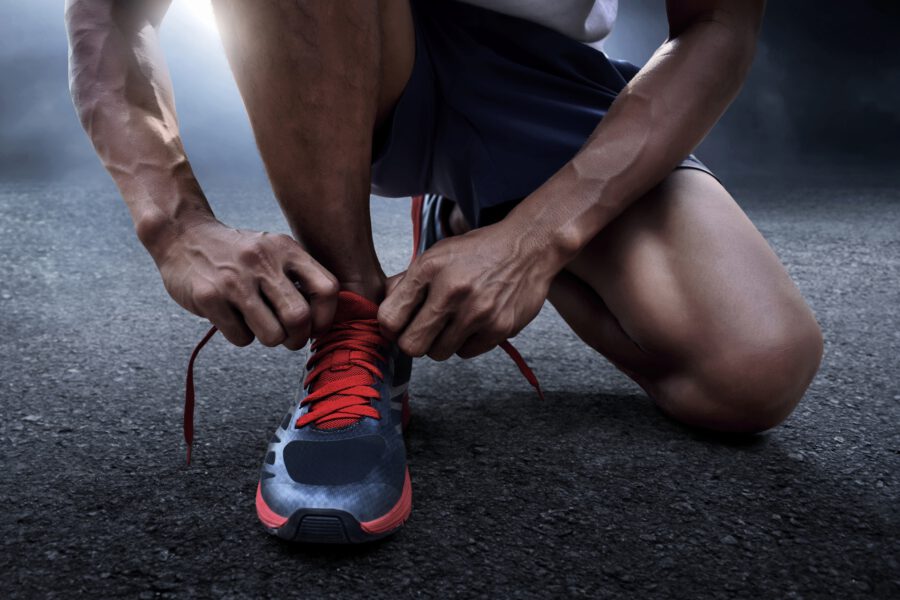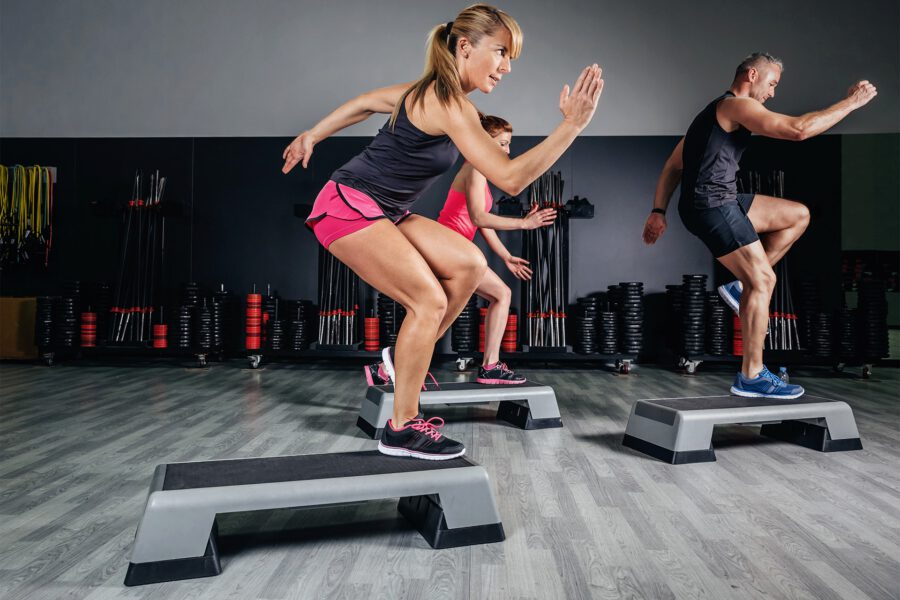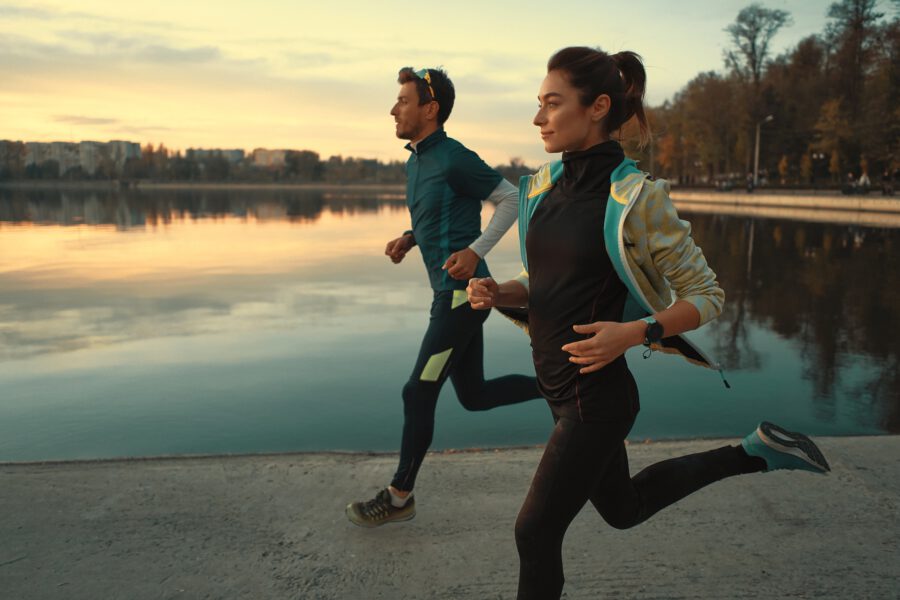How to Choose the Right Gym Shoes for Your Workout Style
A pair of comfortable, supportive shoes is an important investment for all gym goers. The wrong shoes can harm your feet, affect your posture and strain your leg and back muscles.
Well-designed workout shoes can also help you to train with maximum comfort and minimum injury risk. They also support and cushion your feet and absorb impact.
In this article, we’ll provide a guide to choosing the right shoe for your workout type.
Your new workout shoe needs to match the shape of your foot, fit exactly around your heels without sliding down as you walk, and leave plenty of room for your toes. Here are six tips to help you choose a shoe that fits well:
- Have both feet measured for length and width if you are not sure of your exact shoe size. As you get older, your feet change slightly in size.
- Buy your shoes toward the end of the day, as feet swell slightly during the day and also when they get hot.
- Look for natural materials such as leather that will allow your feet to breathe.
- Avoid shoes with pointed toes. The toe area should be deep enough to allow your toes to move freely.
- Avoid slip-on shoes. Fastenings such as laces or velcro straps stop your foot from slipping forward or sideways in your shoe.
- Avoid high heels. The higher the heel, the more it affects your gait, altering your posture and increasing your risk of knee and back problems. The exception is if you are wearing your shoe specifically for squatting. A raised squatting heel puts you in a better biomechanical alignment, helping to keep your torso more upright and improving ankle mobility. [1]
Shoes can impact the shape of your foot in a number of ways. Poorly fitting shoes, for example, can cause the foot to become cramped and compressed, leading to changes in the shape of the foot over time.
On the other hand, shoes that offer proper support and fit can help maintain the natural shape of the foot and prevent deformities from developing. Shoes with high heels or pointy toes, for instance, can cause the foot to be squeezed into an unnatural position and lead to a change in the foot's shape. Therefore, it's important to choose shoes that fit well, provide adequate support, and allow your feet to move naturally.
You should invest in a new pair of trainers after about a hundred hours of use. If you’re working out for 2-3 hour long sessions per week, that works out to about once a year.
There’s a huge range of trainers on the market. However, many of them are designed as fashion statements rather than as serious workout equipment. To find the right shoe you will need to consider your foot shape, the way you move, your weight, the surfaces that you intend to run on and the type of activity that you want to perform.
It is usually better to buy your shoes from a specialist sports shop, rather than a local store, especially if you are unsure which type of trainer is best suited for your needs.
Different types of workouts require different shoe features. Here’s an overview of the key features to look for the main gym workout types:
Cross-training typically includes a combination of activities that target different aspects of physical fitness, such as cardiovascular endurance, strength, flexibility, and balance.
When buying a cross-training shoe, consider the following factors:
- Support: Cross-training shoes should provide adequate support for the feet, especially during high-impact exercises like jumping or running. Look for shoes with a sturdy upper, a stable midsole, and good arch support.
- Cushioning: Cross-training shoes should have enough cushioning to protect the feet and lower legs from impact during exercise. Look for shoes with a cushioned midsole and a padded insole.
- Traction: Cross-training shoes should provide good traction on a variety of surfaces, including indoor gym floors and outdoor surfaces like pavement or grass. Look for shoes with a durable outsole that provides good grip.
- Fit: Cross-training shoes should fit snugly but comfortably, without being too tight or too loose.
- Breathability: Look for cross-training shoes with a breathable upper to help keep your feet cool and dry during intense exercise.
- Flexibility: Cross-training shoes should be flexible enough to allow your feet to move and bend naturally during exercises like jumping and lunging. Look for shoes with a flexible sole and a responsive midsole.
- Durability: Cross-training shoes should be durable enough to withstand the demands of a variety of exercises and activities. Look for shoes with a high-quality construction and materials that can withstand wear and tear.
High-Intensity Interval Training (HIIT) involves doing repeated bouts of fast explosive bouts of exercise and short rest periods.
Here’s what you should take into account when shopping for a HIIT shoe …
- Cushioning: HIIT workouts are high-impact and put a lot of stress on the feet and lower legs. Look for shoes with ample cushioning in the midsole and insole to protect your feet from impact and reduce the risk of injury.
- Support: HIIT workouts can be fast-paced and require a lot of quick movements. Look for shoes with a sturdy upper and good arch support to provide stability and help prevent injury.
- Traction: HIIT workouts often involve a variety of exercises, some of which may be performed on slippery surfaces like a gym floor. Look for shoes with a durable outsole that provides good traction and grip on a variety of surfaces.
- Breathability: Look for HIIT shoes with a breathable upper to help keep your feet cool and dry during intense workouts.
- Flexibility: HIIT workouts often involve a variety of exercises, including jumping and lunging. Look for shoes with a flexible sole and a responsive midsole that allow your feet to move and bend naturally.
- Durability: HIIT workouts are intense and can put a lot of wear and tear on shoes. Look for shoes with a high-quality construction and materials that can withstand the demands of HIIT workouts.
If you’ll be spending most of your gym time in front of a squat or power rack, you’ll need a customized weight training shoe. Here’s what to look for …
- Stability: Weight training exercises, such as squats and deadlifts, can put a lot of pressure on the feet and ankles. Look for shoes with a flat, stable sole and a sturdy upper to provide stability and help prevent injury.
- Traction: Weight training exercises often involve quick movements, so good traction is important. Look for shoes with a durable outsole that provides good grip on the gym floor.
- Cushioning: While weight training shoes should provide stability, they should also have some cushioning to help protect the feet and lower legs from impact during exercises like jumping.
- Fit: Weight training shoes should fit snugly but comfortably, without being too tight or too loose.
- Breathability: Look for weight training shoes with a breathable upper to help keep your feet cool and dry during intense workouts.
- Flexibility: Some weight training exercises, like deadlifts, may require a flexible sole that allows your feet to bend and move naturally. Look for shoes with a flexible sole and a responsive midsole.
- Durability: Weight training exercises can be hard on shoes, so look for shoes with a high-quality construction and materials that can withstand the demands of weight training.
Here’s a workout you should try with weightlifting shoes:
Cardio classes may involve a number of different group fitness workout types, including aerobics, Zumba, BodyPump, and Pilates.
When buying a shoe for your group fitness class, consider the following factors:
- Support: Group fitness classes often involve high-impact movements and sudden changes in direction, so it is important to choose a shoe that provides adequate support for your feet and ankles. Look for shoes with a sturdy upper, a supportive midsole, and a reinforced heel counter.
- Cushioning: High-impact activities, such as jumping, can put a lot of stress on your feet and lower legs. Look for shoes with a cushioned midsole to help absorb shock and reduce the risk of injury.
- Breathability: Group fitness classes can be intense and demanding, so it's important to choose a shoe that provides good ventilation to keep your feet cool and dry. Look for shoes with a breathable upper and a moisture-wicking interior.
- Traction: Group fitness classes often involve quick movements and changes in direction, so it's important to choose a shoe with a durable outsole that provides good traction on various surfaces.
- Fit: Your shoes should fit snugly but comfortably, without being too tight or too loose.
- Flexibility: Some group fitness classes may require a more flexible shoe, such as yoga or Pilates, so look for a shoe with a flexible sole and a responsive midsole that allows your feet to move naturally.
- Durability: Group fitness classes can be hard on shoes, so look for shoes with a high-quality construction and materials that can withstand the demands of high-impact workouts.
When buying running shoes, take the following factors into account:
- Determine your foot type: Before buying running shoes, it's important to understand the type of foot you have, as this can affect how you run and what shoes will work best for you. Common foot types include neutral, overpronated, and supinated feet.
- Consider your running style: Think about your running style, including the distance you typically run, your pace, and the surface you run on. This can help you determine what type of shoe will work best for you.
- Choose the right fit: Make sure the shoes fit comfortably and securely without being too tight. Consider the width and length of the shoes, as well as the fit around the heel and midfoot.
- Consider cushioning and support: Running shoes come with various levels of cushioning and support, so choose a shoe that fits your needs. If you run on harder surfaces, you may want more cushioning, while those with flat feet may need more support.
- Read reviews: Read reviews from other runners to get a sense of the shoe's performance, comfort, and durability.
- Try them on: Finally, try on different pairs of running shoes and walk or run around the store to get a feel for how they fit and perform. Trust your instincts and choose the pair that feels best for you.
Some workout types, like yoga, and pilates may be better done in bare feet. Barefoot training helps improve balance and stability, as the muscles in your feet work harder to maintain control without the support of shoes. It can also increase proprioception, or your body's ability to sense its position and movements in space, which can help with overall posture and alignment.
Additionally, doing barefoot exercise can improve the strength and flexibility of the feet and lower legs, which can lead to better overall foot health.
Your workout shoes are the connection between your body and the gym floor. By taking the time to select the right shoe for your workout type, you’re able to choose a shoe that provides the support, cushioning, breathability, traction, fit, flexibility, and durability you need for a safe and effective workout.



